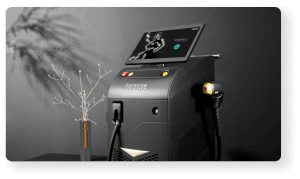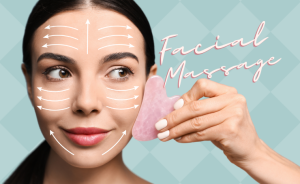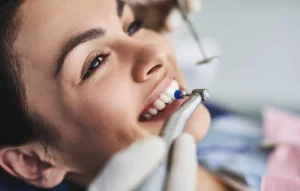When choosing a toothbrush (types of toothbrushes), there are several factors to consider, including:
Bristle type: Toothbrushes come with soft, medium, or hard bristles. Dentists generally recommend using a toothbrush with soft bristles, as hard bristles can damage the teeth and gums.
Head size: Look for a toothbrush with a head size that fits comfortably in your mouth and allows you to reach all areas of your teeth.
Handle size and grip: Choose a toothbrush with a handle that is easy to grip and feels comfortable in your hand.
Electric or manual: If you have trouble reaching certain areas of your mouth or brushing thoroughly, an electric toothbrush may be a good option.
Brand and price: There are many different brands of toothbrushes at various price points. Choose one that fits your budget and that you trust.
Special features: Some toothbrushes include features like timers, pressure sensors, or interchangeable brush heads. Consider whether these features are valuable for your routine.
Ultimately, the most important factor is choosing a toothbrush that you’ll use consistently and that effectively cleans your teeth and gums. Don’t forget to replace your toothbrush every three to four months, or sooner if the bristles become frayed.

Different Toothbrush Designs
There are several types of toothbrushes, including:
- Manual toothbrushes types of toothbrushes: These are the traditional toothbrushes that have been used for decades. They come in a variety of shapes, sizes, and bristle types.
- Electric toothbrushes types of toothbrushes: These toothbrushes use electric power to move the brush head, which can provide a more thorough cleaning than manual toothbrushes.
- Sonic toothbrushes types of toothbrushes: These toothbrushes use high-frequency vibrations to clean teeth and gums.
- Ultrasonic toothbrushes types of toothbrushes: These toothbrushes use ultrasonic waves to clean teeth and gums.
- Interdental brushes types of toothbrushes: These are small brushes designed to clean between the teeth and can be helpful for people with braces or other dental appliances.
- Chewable toothbrushes types of toothbrushes: These toothbrushes are designed for children and can be chewed on to clean teeth.
- Bamboo toothbrushes types of toothbrushes: These toothbrushes are made from bamboo, a sustainable and environmentally friendly material.
- Silicone toothbrushes types of toothbrushes: These toothbrushes are made from soft, flexible silicone and are gentle on teeth and gums.
- Travel toothbrushes types of toothbrushes: These are small, compact toothbrushes designed for use while traveling.

Manual toothbrushes
Manual toothbrushes (One of the 9 types of toothbrushes) are the traditional types of toothbrushes that come in a variety of shapes, sizes, and bristle types. They are typically made of plastic with nylon bristles, and are designed to be used with toothpaste to effectively clean the teeth and gums.
Manual toothbrushes are generally less expensive than electric toothbrushes, and can be found at most drugstores and supermarkets. They are also easy to use and require no special charging or maintenance. When choosing a manual toothbrush, look for one with a small head size that will fit comfortably in your mouth and allow you to reach all areas of your teeth.
The bristles should be soft or extra-soft, as hard bristles can damage teeth and gums. It’s important to brush your teeth twice a day for two minutes each time, using gentle circular motions. Be sure to replace your manual toothbrush every three to four months or when the bristles begin to fray.

Electric toothbrushes
Electric toothbrushes (One of the 9 types of toothbrushes) are powered by an electric motor that moves the brush head in a back-and-forth or rotating motion. They are designed to provide a more thorough cleaning than manual toothbrushes, as the bristles can move at a much faster speed and with more precision.
Electric toothbrushes come in a variety of shapes, sizes, and features, including timers, pressure sensors, and multiple brush head options. Some electric toothbrushes also have Bluetooth connectivity and can sync with a smartphone app to track brushing habits and provide personalized feedback.
When choosing an electric toothbrush, look for one with a small head size that will fit comfortably in your mouth and allow you to reach all areas of your teeth. Consider the type of bristle motion and whether you prefer a rotating or back-and-forth motion. You should also consider the battery life and charging options.
Electric toothbrushes are generally more expensive than manual toothbrushes, but they can be a good investment in your oral health. They can be particularly helpful for people with braces or other dental appliances, as well as for people with limited mobility or dexterity.
It’s important to brush your teeth twice a day for two minutes each time, using gentle circular motions. Be sure to replace the brush head every three to four months, or sooner if the bristles become frayed or worn.

Sonic toothbrushes
Sonic toothbrushes (One of the 9 types of toothbrushes) are a type of electric toothbrush that use high-frequency vibrations to clean teeth and gums. They typically operate at a frequency of 20,000-40,000 strokes per minute, which is much faster than the speed of a manual or traditional electric toothbrush.
The high-frequency vibrations create a wave-like motion that helps to dislodge plaque and bacteria from the teeth and gums. Sonic toothbrushes are also designed to create tiny bubbles in the mouth, which can help to clean hard-to-reach areas.
When choosing a sonic toothbrush, look for one with a small head size and soft bristles that will fit comfortably in your mouth and be gentle on your teeth and gums. Consider the battery life and charging options, as well as any additional features such as timers or pressure sensors.
Sonic toothbrushes can be more expensive than traditional electric or manual toothbrushes, but they may be a good investment in your oral health if you are looking for a more thorough cleaning. As with all toothbrushes, it’s important to brush your teeth twice a day for two minutes each time, using gentle circular motions. Be sure to replace the brush head every three to four months or as recommended by the manufacturer.

Ultrasonic toothbrushes
Ultrasonic toothbrushes (One of the 9 types of toothbrushes) are a type of electric toothbrush that use ultrasonic waves to clean teeth and gums. The ultrasonic waves create microscopic bubbles that implode on the surface of the teeth, creating a scrubbing action that can help to remove plaque and bacteria.
Ultrasonic toothbrushes typically operate at a frequency of 1.6-1.8 MHz, which is above the range of human hearing. The bristle motion is very fast, with up to 96 million movements per minute, making it even more effective than sonic or traditional electric toothbrushes.
When choosing an ultrasonic toothbrush, look for one with a small head size and soft bristles that will fit comfortably in your mouth and be gentle on your teeth and gums. Consider the battery life and charging options, as well as any additional features such as timers or pressure sensors.
Ultrasonic toothbrushes can be more expensive than other types of toothbrushes, but they may be a good investment if you are looking for a more thorough cleaning. As with all toothbrushes, it’s important to brush your teeth twice a day for two minutes each time, using gentle circular motions. Be sure to replace the brush head every three to four months or as recommended by the manufacturer.

Interdental brushes
Interdental brushes (One of the 9 types of toothbrushes) are small brushes designed to clean the spaces between teeth and other hard-to-reach areas in the mouth. They are particularly useful for people with braces, dental bridges, or other dental appliances that make it difficult to clean between teeth with traditional flossing.
Interdental brushes come in various sizes and shapes, and are typically made with a small, angled brush head attached to a long handle. The bristles are usually made of nylon or other synthetic materials, and the handle may be made of plastic or metal.
To use an interdental brush, insert the brush head gently between the teeth, and move it back and forth to remove plaque and debris. It’s important to use a gentle, back-and-forth motion, rather than forcing the brush between the teeth, which can cause damage to the gums.
When choosing an interdental brush, select a size that fits comfortably between your teeth, and consider the shape and angle of the brush head to ensure it can reach all areas of your mouth. It’s also important to choose a brush with soft bristles to avoid damaging the gums.
Interdental brushes can be used in addition to regular brushing and flossing, but should not be used as a substitute for these practices. Be sure to replace the brush head regularly, or as recommended by the manufacturer, to ensure optimal cleaning.

Chewable toothbrushes
Chewable toothbrushes (One of the 9 types of toothbrushes) are designed for children who are learning to brush their teeth. They are typically made of soft rubber or silicone, and are shaped like a toy or teething ring. The idea is that children can chew on the brush to clean their teeth, while also getting relief from teething discomfort.
Chewable toothbrushes may also have small bristles or nubs on the surface to help clean the teeth and gums. They are often brightly colored and come in fun shapes and designs to make brushing more enjoyable for children.
When choosing a chewable toothbrush, look for one that is made from safe, non-toxic materials, and that is appropriately sized for your child’s mouth. Consider the shape and texture of the brush to ensure it will be comfortable for your child to use.
Chewable toothbrushes can be a helpful tool in teaching children to brush their teeth, but they should not be used as a substitute for regular brushing and flossing. As children grow and develop, they should be encouraged to transition to a manual or electric toothbrush to ensure optimal cleaning.

Bamboo toothbrushes
Bamboo toothbrushes (One of the 9 types of toothbrushes) are a type of eco-friendly toothbrush that are made from bamboo, a renewable and sustainable material. The handles are typically made from bamboo, while the bristles may be made from nylon or other synthetic materials.
Bamboo toothbrushes are a popular alternative to plastic toothbrushes, which can take hundreds of years to decompose in landfills and contribute to environmental pollution. Bamboo is a fast-growing plant that requires less water and pesticides than other crops, making it a more sustainable choice.
When choosing a bamboo toothbrush, look for one that is made from 100% bamboo, with bristles that are free from BPA and other harmful chemicals. Consider the softness of the bristles and the size of the brush head to ensure it will be comfortable to use.
It’s important to note that while bamboo toothbrushes are more eco-friendly than plastic toothbrushes, they still need to be disposed of responsibly. The handle can be composted or recycled, but the bristles should be removed and disposed of in the trash.
Bamboo toothbrushes can be a great option for those looking to reduce their environmental impact, but it’s important to remember that good oral hygiene practices are still the most important factor in maintaining healthy teeth and gums. Be sure to brush your teeth twice a day for two minutes each time, using gentle circular motions, and replace your toothbrush every three to four months or as recommended by the manufacturer.
Silicone toothbrushes
Silicone toothbrushes (One of the 9 types of toothbrushes) are a types of toothbrushes made from soft, flexible silicone. They are designed to be gentle on the teeth and gums, making them a good option for people with sensitive teeth or gums, or for those who have had dental work done.
Silicone toothbrushes typically have small bristles or nubs on the surface to help clean the teeth and gums. They are easy to clean and can be sterilized by boiling or using a dishwasher.
When choosing a silicone toothbrush, look for one with a small head size and soft bristles that will fit comfortably in your mouth and be gentle on your teeth and gums. Consider the texture of the bristles to ensure they will effectively clean your teeth.
Silicone toothbrushes are a relatively new option in the market, and more research is needed to determine their long-term effectiveness compared to traditional toothbrushes. However, they may be a good choice for people with specific dental needs or sensitivities.
As with all toothbrushes, it’s important to brush your teeth twice a day for two minutes each time, using gentle circular motions. Be sure to replace your toothbrush every three to four months or as recommended by the manufacturer.

Travel toothbrushes
Travel toothbrushes (One of the 9 types of toothbrushes) are designed for use while traveling or on-the-go. They are typically compact and lightweight, making them easy to pack in a suitcase or carry-on bag.
Travel toothbrushes come in a variety of styles, including manual and electric toothbrushes. They may have a foldable or removable head to save space, and may come with a protective case or cap to keep the bristles clean during transport.
When choosing a travel toothbrush, consider the size and weight of the brush, as well as any additional features such as a protective case. If you prefer an electric toothbrush, look for one that is compact and has a long battery life.
It’s important to continue your regular brushing routine while traveling, as changes in diet and routine can increase the risk of tooth decay and gum disease. Be sure to pack your toothbrush, toothpaste, and floss, and brush your teeth twice a day for two minutes each time.










